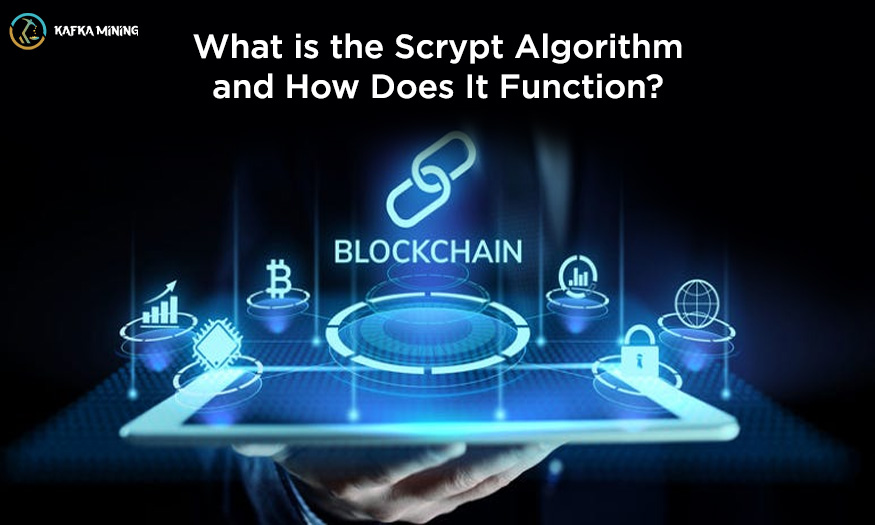
Scrypt is a type of computer formula that creates a secure password and checks the validity of work in a system called Proof of Work (PoW). It's tough for someone who shouldn't be in the system to solve, which makes it really safe. Unlike Bitcoin's SHA-256, Scrypt takes longer to solve. In this blog, we'll dive into how Scrypt works, what coins you can mine with it, and more.
The Scrypt algorithm, conceived by Colin Percival in March 2009, emerged as a pioneering advancement over the conventional SHA-256 algorithm. It was specifically devised as a password-based key derivation function, intended to fortify defenses against certain hardware-based exploitations.
Scrypt's primary objective is to resist Application-Specific Integrated Circuit (ASIC) mining, thereby deterring privileged miners equipped with specialized hardware from monopolizing the mining network. By design, Scrypt imposes significant computational complexity and substantial memory requirements, rendering it arduous for potential attackers to derive cryptographic keys or compromise passwords. This robustness contributes an additional stratum of security to the blockchain network.
Below, we'll outline the notable features and traits of the Scrypt algorithm.
1. Key Derivation Function Based on Passwords (KDF)
At its core, the Scrypt algorithm stands out as a Key Derivation Function (KDF) that relies on passwords. In cryptography, KDF refers to a hash function that derives secret keys from an original master key, such as a password, passphrase, or pseudorandom function. This approach ensures the generation of secure keys and fortifies defenses against potential password-guessing attacks.
2. High Memory Usage
Before the advent of Scrypt, KDFs like Password-Based Key Derivation Function 2 (PBKDF2) lacked the efficiency to withstand sophisticated mining hardware such as FPGAs (Field Programmable Gate Array). Scrypt tackles this issue by being both computationally and memory-intensive.
3. Resistant to ASIC Mining
Scrypt was developed to counteract the monopolization of the crypto-mining sector by ASIC miners. It represents an advancement over the SHA-256 algorithm and other Proof of Work (PoW) algorithms due to its intricate structure.
In Scrypt's design, miners are required to promptly generate random numbers, which are then stored in the processor's Random Access Memory (RAM) and evaluated before submission. This process significantly heightens the difficulty of mining for ASICs.
4. Adjustable Parameter
Scrypt allows miners to tailor specific parameters, such as memory cost and parallelization factor, to suit their hardware capabilities and security requirements. This adaptability renders Scrypt flexible and well-suited for diverse computing environments.
5. Security in Cryptography
Scrypt provides strong cryptographic security to the blockchain network, safeguarding against parallelization attacks and time-memory trade-off attacks. This makes Scrypt suitable for a wide range of applications, ensuring the confidentiality and integrity of sensitive data.
Given these attributes, Scrypt proves to be an excellent choice for various cryptographic tasks, including password hashing, key derivation, and cybersecurity.
The memory-intensive and secure key derivation properties of the Scrypt algorithm render it well-suited for the following purposes.
Below are several advantages of the Scrypt algorithm that distinguish it from other mining algorithms:
Memory Intensity: Scrypt is intentionally memory-intensive, enhancing its resistance to parallelization and specialized hardware attacks.
Adaptability: Scrypt is highly flexible and adaptable, making it suitable for a wide range of applications.
Efficiency: Compared to other Proof of Work (PoW) algorithms like SHA-256, Scrypt is less complex and consumes less energy.
Versatility: Scrypt is well-suited for tasks such as file encryption, wallet encryption, and password protection.
Speed: Scrypt mining typically outpaces other forms of cryptomining, including Bitcoin mining.
Lower Transaction Fees: Scrypt-based coins often entail lower transaction fees on their respective blockchains.
Numerous cryptocurrencies employ the Scrypt algorithm. Below is a compilation of prominent cryptocurrencies that utilize the Scrypt algorithm.
In addition to the ones mentioned earlier, numerous other coins utilize the Scrypt algorithm. You can explore these on reputable cryptocurrency platforms such as CoinMarketCap.
The Scrypt algorithm holds significant promise in cryptography, enhancing security measures and safeguarding blockchains against malicious attacks. As businesses increasingly transition to digital operations, the secure management of sensitive data becomes paramount. Scrypt's memory-intensive nature and adaptability across diverse computing environments make it well-suited for tasks like password hashing and key derivation. Serving as an enhanced iteration of the traditional SHA-256 algorithm, Scrypt emerges as a viable alternative for preserving the integrity and security of online information.
Frequently Asked Questions About the Scrypt Algorithm
How does the Scrypt algorithm differ from traditional cryptographic algorithms like SHA-256?
The Scrypt algorithm differs from traditional algorithms like SHA-256 by emphasizing memory intensity, which enhances its resistance to cyber threats and parallelized hardware attacks. This makes Scrypt well-suited for password hashing and key derivation functions.
How does Scrypt improve password security?
Scrypt bolsters password security by introducing a memory-hard function that necessitates substantial computational resources. This increased complexity makes it more challenging for attackers to crack passwords, thus enhancing immunity to cyber attacks.
Can Scrypt be deployed across various computing environments?
Yes, Scrypt exhibits high adaptability to diverse computing environments. It can be implemented on a broad spectrum of devices, ranging from personal computers to embedded systems, ensuring versatility in its applications.
Leave a Comment